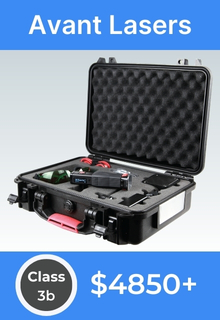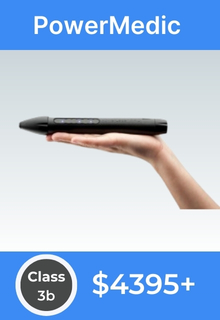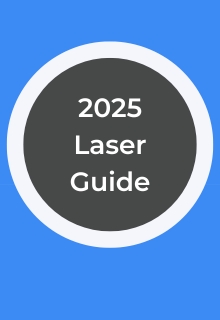Pain
Cold Laser Therapy for Pain Management

EVOLaser
- 9W-27W
- Entry Level Class 4
- Single, Dual and Quad Wave
- Continuous and Pulsed
- 5 year Warranty
- Battery Included

TerraQuant / MR4
- Professional and Home Use
- Up to 50 Watt Peak Power
- Best Selling U.S. System

Avant Systems
- The Most Flexible 3b Laser
- Pulsed Sweep and CW
- IR/ Red / Violet
- Broad and Pinpoint

ReGen Laser
- The State of Art
- Class-4
- Up to 6 wave
- Up to 104w
- Skin Temp Control
- Optional 450nm

PowerMedic
- Handheld 1W-3W
- Hyperpulsing
- 810nm Danish Design
- Exceptional Quality

ATPmax Laser
- Mid-Level Class-4
- Up to 60w
- 650nm-980nm
- Pulsed or CW

Apollo Lasers
- Handheld, Portable, and Desktop Versions
- Broad and Pinpoint
- 2-5 Watts Continuous

3B Scientific
- Multipoint Therapy
- 12 Simultaneous Points
- 660nm and 785nm
- Acupuncture /Trigger Point

Used Systems
- Pro Only Systems
- Optional Electrical Stim
- 670nm-950nm
- Up to 1.04 Watts Pulsed or CW

ReGen Pod
- 7.6 kW Pulsed & CW
- Whole Body Pod
- Incredible Results
- The Absolute Best Pod

Guide to Lasers
- Learn About
- Differnt classes
- Power Levels
- Wavelengths
- Max Efficacy

Compare Every Brand
- Compare all the options currently on the market
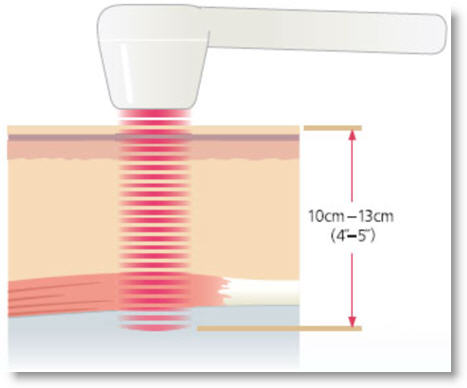 |
| Cold laser light penetrating deep Tissue |
For many people with acute or chronic pain, the options offered by traditional doctors are just not good enough. Long- term use of pain killers can cause liver damage, addiction, depression, deadly vascular problems and a low quality of life. Some drugs also require the use of other drugs to offset the side effects of the primary medicine. For some injuries, surgery is recommended but once again, the benefits may not outweigh the disadvantages. A recent study showed that patients who had a fake knee surgery felt as good as those that had a real knee surgery. Both surgery and prescription drug are the best answer for some but there are others who can get better results from a non-invasive treatment like cold laser therapy.
Over the past 25 years (since Microlight got the first FDA clearance for a therapy laser), cold laser therapy has exploded with many practitioners like chiropractors, acupuncturists, and physical therapists. It has also seen significant growth in use by veterinarians for treating horses and companion pets. These professionals are typically trying to heal the root cause of the problems versus treating the symptoms of the problem. To do this, many have been using low level lasers or cold laser therapy in conjunction with their other treatment modalities. The wide spread use of cold lasers in doctor's offices has given access to the technology to hundreds of thousands of people who are now starting to buy cold lasers for their home.
Today, there are a variety of cold lasers that are FDA cleared for pain control, inflammation reduction and accelerated healing. The science behind cold lasers is based on using a wavelength that penetrates the body to an appropriate level and using a pulsing frequency or continuous wave that interacts with the tissue to inhibit or excite the damaged area. Studies have shown that laser light is absorbed by healthy tissue but it does not trigger a reaction. Lower wavelengths (like red light at 600nm) are best for shallow treatments, which is where many of our pain sensors are located, and higher IR wavelengths (up to 980nm) for deep penetration. The use of continuous or pulsed laser beams allow users to optimize the use of their cold laser to promote maximum pain control or maximum healing. There are several variables to consider when using a cold laser for pain control:
- Wavelength of Light- Infrared wavelengths (800nm to 980nm) are better for deep penetration while red wavelengths (600nm to 750nm) are best for shallow treatments. At this point, there is very little science to show that other wavelengths of light, like blue and purple, have much therapeutic value and you can buy a stand-alone UV light for about $100 so integrating it into a laser does not add much value.
- Power Level - Higher power levels mainly shorten the treatment time. Whereas very low power levels may not ever reach a significant energy density in a reasonable time.
- Continuous or Pulsed Output - Continuous lasers allow for faster saturation of the tissue but pulsing the laser provides an addition benefit in healing. It is best to have both options if you can afford it.
- Protocol Accuracy -One key to success is having the right protocol (treatment plan) for each condition. Some protocols treat the root cause and some treat the conditions.
- Treatment time - In a doctor's office or at home, the treatment time can be quite long for people with multiple problems but shorter treatment times require more expensive equipment.
These elements must be optimized for each therapy. This is done by selecting the right wavelength of light (typically 600 to 980mnm) and then using enough power to bombard the tissue over a long enough therapy session that the unhealthy area is illuminated at the optimum level to provide the desired results.
Class 1 and class 2 lasers are the safest and lowest cost therefore the best for home use. Class 3 and 4 lasers require a recommendation letter from a licensed health care professional for home use. Some manufacturers, like Chattanooga, will not sell systems for home use. Because Class 3 and 4 lasers are so expensive, many doctors also use class 1 and 2 lasers in their office. In general, higher power lasers have shorter treatment times or higher dosages, so the biggest advantage of class 4 lasers is the ability to treat patients faster. For home use, a class 1, 2 or 3 laser can be best since it is not being used all day, they are safer, and the payback period (ROI) is better than it would be if you buy more laser than you need. If you are treating multiple chronic problems (with a typical treatment time of 10 minutes per area) or you have a very high pain level, then a class 4 home laser can be the best option.
| Brand | Spec | Price | Notes | |
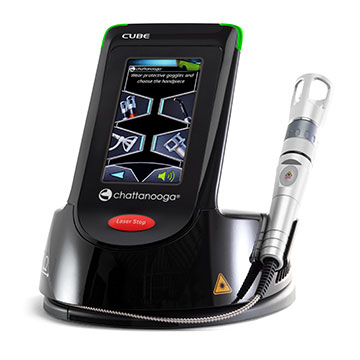 |
Eltech Klaser by Chattanooga | 12 - 15 watt Quad Wavelength Pulse & CW | $19990 - $27500 | The "Gold Standard" of lasers from Italy |
 |
EVOlaser | 9 - 20 watt Up to 4 Wavelengths Pulse & CW | $9,950 - $14,500 | One of the best values in class 4 systems. |
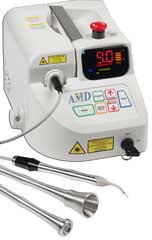 |
Pilot Laser | 9 watt 810nm Pulse & CW | $7995 | A simple system with a lot of power for the money |
 |
Apollo Laser | .5 - 5 watt 810nm CW | $5149&Up | The "grab-and-go"simple Class 4 system |
ColdLasers.Org sells a wide range of low level or cold lasers that are specifically designed for pain control. We also have a limited directory of practitioners that offer cold laser therapy. If possible, it is best for home users to have a professional cold laser therapy session before buying a product. If you are researching products, a wide range of options are listed at the top and left of this page. If you need help selecting a laser, please call us at 800-388-0850.
You can see a table of most of the popular cold laser currently on the market in our guide to cold lasers.


